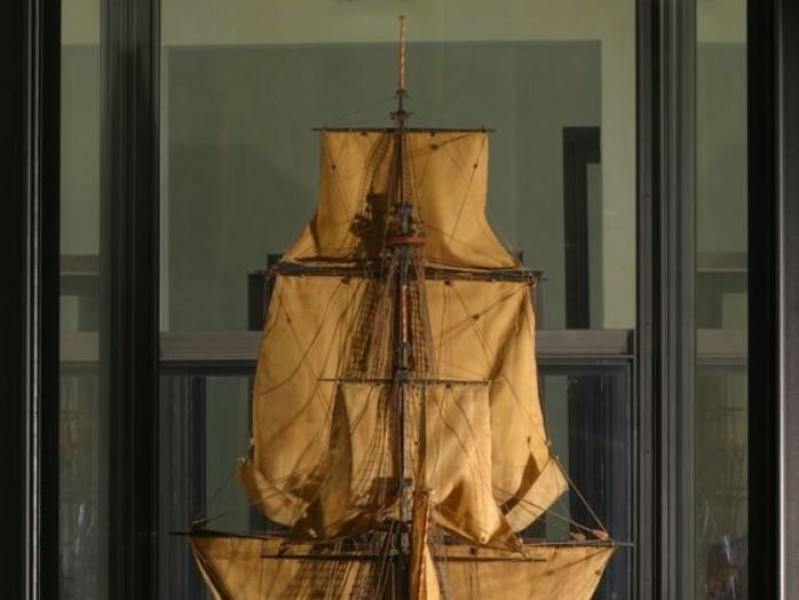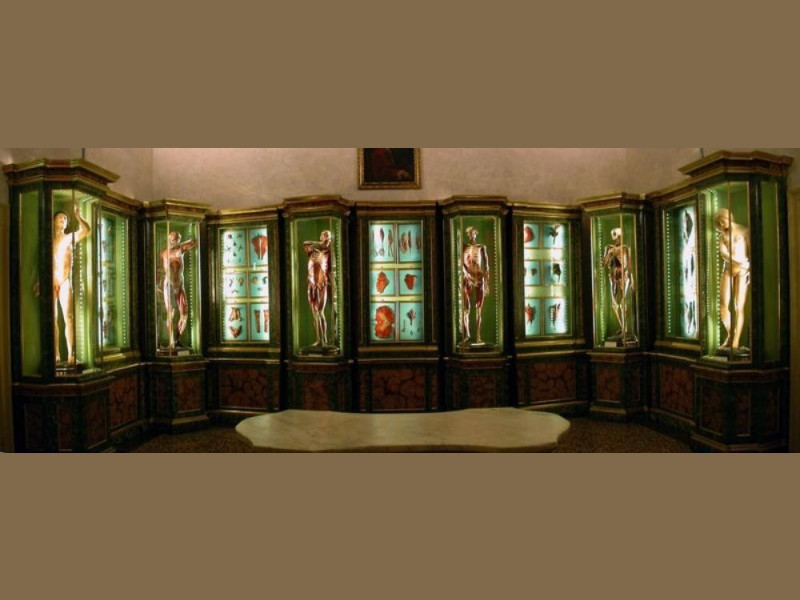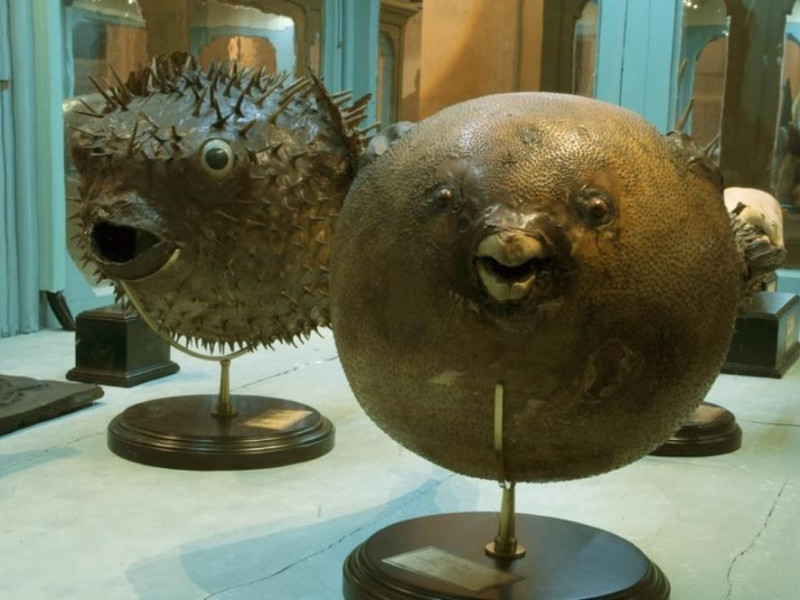Museo di Palazzo Poggi
Inside Palazzo Poggi, home of the rector of the University of Bologna, are preserved some historical collections of the Institute of Sciences, founded in 1711 by Luigi Ferdinando Marsili.AULA Carducci. The classroom dedicated to Giosuè Carducci opens the museum of Palazzo Poggi. Here, from 1860, and for forty years the poet gave his lectures on literature. Inside are the original furnishings, as well as a bronze bust made in Rome by Bastianelli. Opposite is the hall of Hercules, with the eponymous statue carved in rock in 1730 by Angelo Piò, already located in the courtyard of the building. HISTORICAL MUSEUM OF THE STUDY AND EIGHTH CENTENARY. Established in 1888 on the occasion of the Eighth Centenary Archiginnasio transferring between the University and in 1948 in Palazzo Poggi, preserves hundreds of documents from the eleventh century, scrolls, codices, incunabula, seals, graduations, statutes, donations, autographs , medals, insignia Rector. Among the many relics of the museum include the toga of Luigi Galvani. They are also on display, more than twenty oil portraits of distinguished faculty of the Firm. Together with over four hundred paintings from the collection begun in 1754 by the Bolognese Cardinal Filippo Maria Monti, are the paintings of the University about six hundred works distributed in the rooms of the rectory and the library. In the collection include works by Donato Crete, Lucia Casalini Torelli, Vandi, Zanotti, Keeble, Crescimbeni, in addition to the marble bust of Eustachio Manfredi, sculpted by the famous anatomist Ercole Lelli. Aldrovandi Museum. Reconstituted at the Academy of Sciences in 1907 and annexed in 1913 to the University Library in the Palazzo Poggi, the museum has a small part dell'ingente heritage that formed the collection donated to the Senate in 1603 by testamentary disposition by the famous naturalist Ulisse Aldrovandi (1522 - 1605), professor of natural philosophy at the University and founder of the Botanical Garden. The core Aldrovandi, initially placed in the Town Hall, along with the collection of naturalistic Cospi, was moved to the Palazzo Poggi after the founding of the Institute of Sciences. Impoverished by the Napoleonic pillage, was redistributed in the different colleges. In the eighteenth century the museum showcases the wonderful paintings are exhibited watercolor effect accompanying the volumes of the 'Natural History', where the Aldrovandi described plants and animals with an innovative scientific approach, based on the survey and integrated by. You can observe minerals, fossils, stuffed animals or dried, the famous 'Ranina Aldrovandi', prepared from vegetable or animal origin. The materials of the collections also include correspondence and works of the naturalist illustrated by a collection of woodblock tablets, a herbarium in sixteen volumes, four portraits, one of which Palagi, and a mosaic portrait of Benedict XIV. MUSEUM Marsili. The museum was set up in the halls of the University Library in 1930 as part of the celebrations for the bicentenary of the death of Luigi Ferdinando Marsili, a distinguished general and a man of encyclopedic knowledge which must be the foundation in Bologna, in 1711, the Institute of Science , opened in Palazzo Poggi in 1714. Marsili marks his work with an innovative moment in the intellectual life of the city and in the interest of the ancient world. While the archaeological materials from the collections Marsili are visible to the Archeological Museum, the Museum Marsili is divided into two rooms of the building and is largely formed from free paper materials. Here include manuscripts and printed works documenting the studies of the Marsili from classical antiquity to the military art, geography, ethnology to the natural sciences. Also visible wooden models of fortifications, as well as bronze models of cannons and mortars from the rooms of the military architecture of the Institute of Sciences. Originate from the same maps, manuscripts and drawings. MUSEUM OF ANCIENT SHIPS AND MAPS. The formation of the museum, ordered in Palazzo Poggi, along with other collections of the Rector of the University, refer to the Chamber of Geography and Marine built in 1724 as part of the Science Institute. There are ten very rare models of various ships, galleons, warships made from the sixteenth to sec. XVIII, including Le Royal Louis, Le Bien Aim (1771) and Le Vainqueur. A section of the museum collects important copper engraved plates of the seventeenth century published in Bologna, Paris, Marseille, Amsterdam and England. OBSERVATORY AND MUSEUM OF ASTRONOMY. It 'set up since 1979 in three areas of the building of the Observatory, Palazzo Poggi for the construction of which already in 1702 had addressed the general Marsili Eustachio Manfredi. Designed in 1712 by GA Towers and completed in 1725 by CF Dotti, tower, or room of the eight windows, rotated with respect to the building with the four faces oriented to the cardinal points and opening in time for the observation of the zenith, was built specifically for the use of instruments and telescopes extrameridiani long. In addition to the valuable instruments Sisson, installed in 1741, exhibits numerous nautical instruments, surveyors and surveying and a telescope Campani in rigid tubes, perhaps only one left of its kind, no less than eight meters long. Of particular interest is the meridian line of brass and marble Ercole Lelli (1741) and the sundial spin of 1726. Astrolabes and Another room contains some rare cards printed in Beijing at the beginning of the seventeenth century by the Jesuit fathers. MUSEUM OSTETRICO "G. A. Galli". Established in 1757 on the initiative of Pope Benedict XIV, who had bought the scientific laboratory of the famous surgeon Giovanni Antonio Galli (1708-1782), he was ordained in Palazzo Poggi. This is the reconstruction of an experimental laboratory, ahead of his time, which attests to the high level of obstetrics of the eighteenth century by anatomical tables, models of clay, wood and wax, surgical instruments. INDIAN MUSEUM. The museum, along with other collections of the Rector of the University, houses the collection of objects and materials gathered in India in 1902 by Francis Pullè (1850-1934), scientist and patriot. It preserves 'cloisons', Chinese porcelain, weapons and some cloths, small bronzes, vases and Indian dishes made of metal, as well as several manuscripts.






